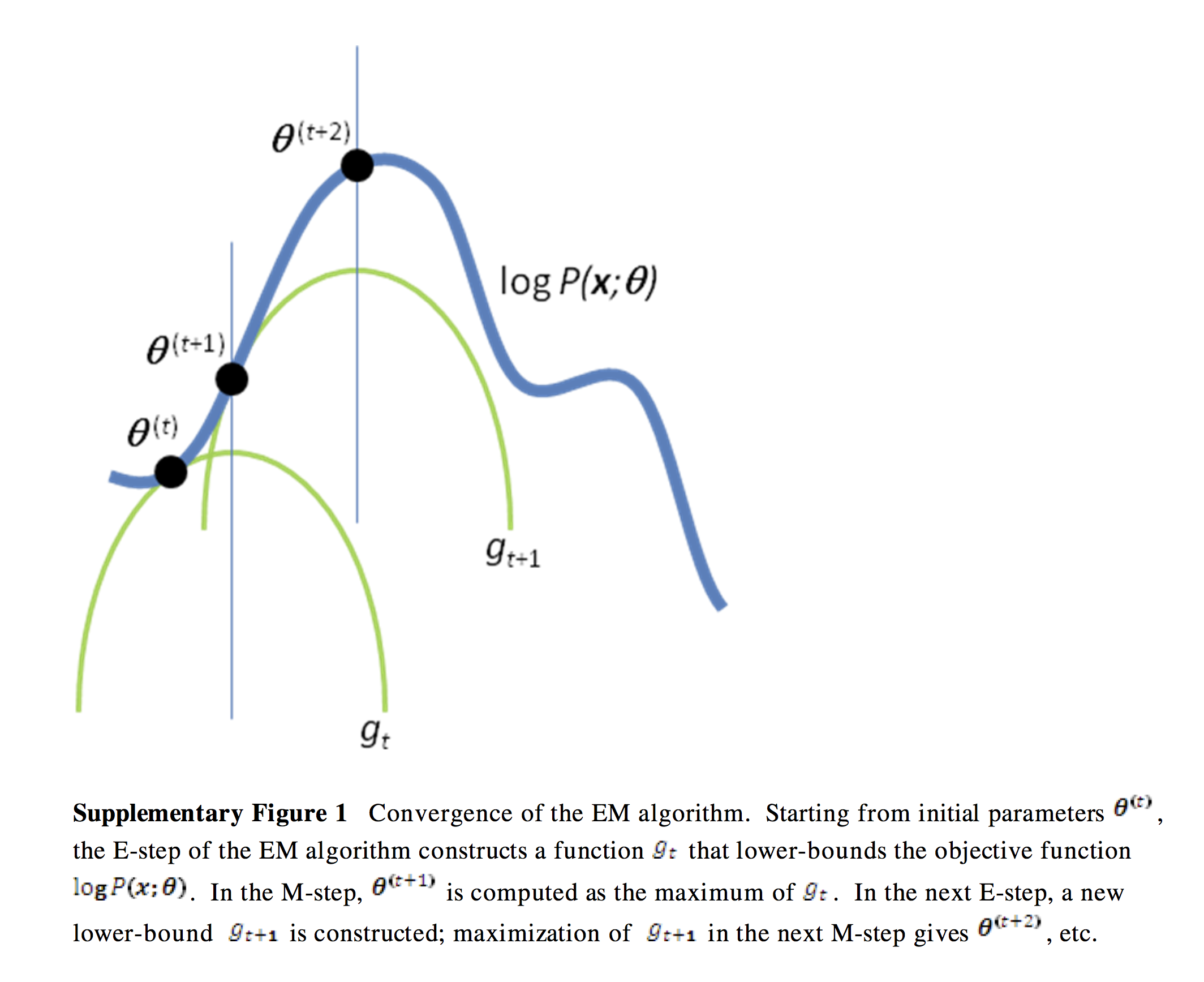2. EM Algorithm (1)
There are two important concepts that you have to know, before knowing about EM Algorithm. They are 1. Jensen’s inequality & 2. KL-divergence.
(1) Jensen’s inequality & KL-divergence
[ Jensen’s inequality ]
- convex / concave
- relates the value of a convex/convex function of an integral to the integral of the convex/concave function
in the case of concave function..
( a, b is a any two data point. alpha is a weight between 0 and 1 )
https://encrypted-tbn0.gstatic.com/
[ KL-divergence ]
KL-divergence( Kullback–Leibler divergence), which is also called relative entropy, is a measure of how one probability distribution is different from another probability distribution.
For a discrete probability distribution, the KL-divergence of Q from P is

and for a continuous case, it is


https://cs-cheatsheet.readthedocs.io/en/latest/_images/kl_divergence.png
The three properties of KL-divergence are
- \(KL(p \mid q)\) is not always same with \(KL(q \mid p)\)
- \[KL(p \mid p) = 0\]
- $$KL(p \mid q)$ is always more or equal to 0
(2) EM algorithm
( EM : Expectation-Maximization )
EM algorithm is one way of finding MLE in a probabilistic model which has latent variable. Before talking about this algorithm in detail, I’ll start with an example.
example )
Remember soft clustering using GMM in the previous post? ( https://seunghan96.github.io/em%20algorithm/8.-em-Latent_Variable_Models/)
We had three mixture of Gaussian distribution ( 3 clusters ). We wanted to find the density of each data point ( \(= p(X \mid \theta)\) ) I told you that I will find this solution with EM algorithm, and I’m going to talk about that now. ( since now you know what Jensen’s Inequality & KL-divergence are ).
We take logarithm of the likelihood ( \(= p(X \mid \theta)\) ) for easier calculation. Then using Jensen’s Inequality, we can make the expression like below.
[ Interpretation ]
We built a lower bound by using Jensen’s Inequality, which is expressed as \(L(\theta,q)\). Now, we are going to maximize this. Instead of directly maximizing the likelihood, we can maximize the lower bound instead to find the value of \(log p(X \mid \theta)\). But we will not only use one lower bound. Instead, we can use a family of lower bounds, and choose the one that suits best at each iteration. Look at the picture below, and you will understand what I mean.

https://people.duke.edu/~ccc14/sta-663/
The best lower bound among the lower bound family is chosen with the following expression. ( The best possible bound is when \(log\;p(X\mid \theta)\) = \(L(\theta,q)\) )
That’s all! Quite Simple!
In short, all we have to do is maximizing the lower bound. So how do we maximize it? We do it iteratively (E-step & M-step). First, we fix \(\theta\), and maximize the lower bound with respect to \(q\). Then, we fix \(q\), and do the same thing with respect to \(\theta\). No you have seen how EM algorithm is applied to GMM.
Algorithm Summary
- E-step : fix \(\theta\), maximize the lower bound with respect to q
- M-step : fix \(q\), maximize the lower bound with respect to theta
In the next post, I’ll tell you more about EM algorithm in detail.
